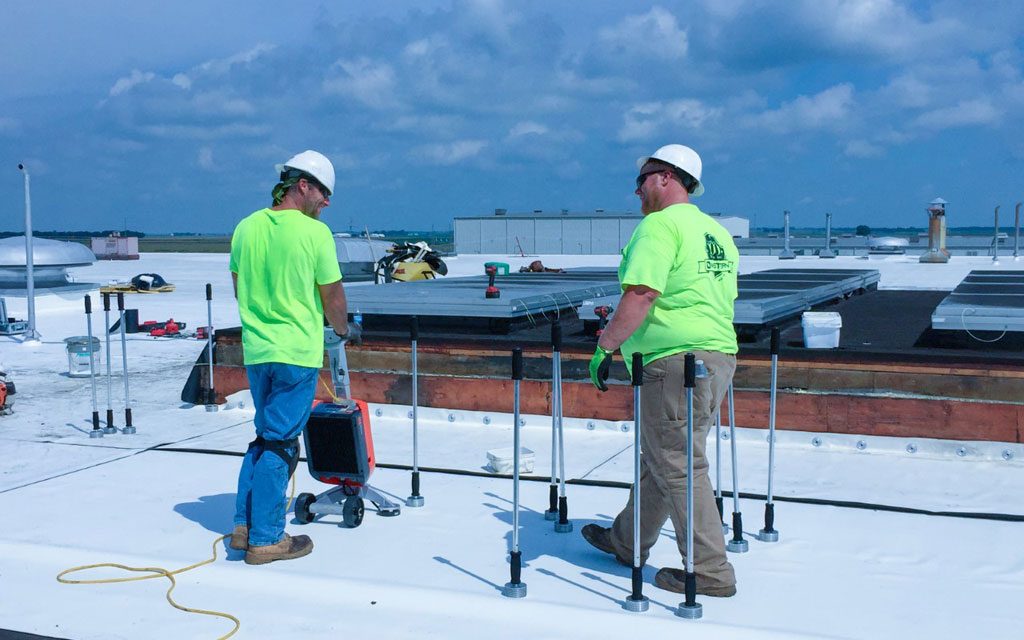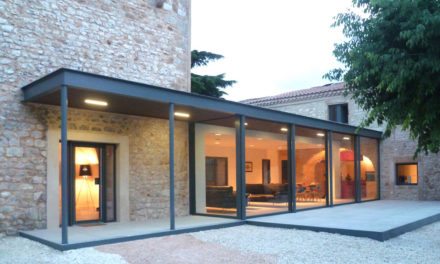(St. Louis, MO, May 1, 2018) Roof leaks are often a nuisance for a building owner or property manager. Often difficult to track down, leaks can cause damage to interior finishes and lead to tenant complaints – and, if not resolved, unhappy tenants. Those leaks can become a nightmare when a financial decision is made to replace the entire roof of the building…and it still leaks.
“Frequently, an exterior building restoration company, like Western Specialty Contractors, will get a call to come out and try to resolve the leaks. The conversation usually starts with an explanation that this is a brand new roof, that it has had issues from day one, and that the roofer has been out numerous times to satisfy the warranty to no avail. The roofer now says that the problem is not the roof, but something else. That news may be hard for a building owner to accept – after all, it was probably a significant financial investment – but most of the time the roofer is right,” said Thom Belgeri, Department Manager of Western Specialty Contractors’ St. Louis Roofing Division.
Most structures today are constructed out of many different materials that move at different rates. Marrying all of these components together is complex and, at the same time, can make the roof more vulnerable to errors and failure when re-roofing.
“In roofing, details around penetrations at the parapet walls and around building systems are very critical to successful projects,” said Belgeri. “Those are points where the majority of leaks occur. However, in a re-roofing project, even if all the details are done correctly, it may not be enough.
Often the materials located above those details has aged and weathered as well, leading to deterioration and allowing moisture through. That moisture then finds its way behind the newly installed roof.”
Belgeri says it is important to review the condition of the building’s components that rise above the roof level such as a penthouse, elevator shafts, stair towers, parapet walls and coping and to evaluate the parapet walls from both the interior and exterior. The most visible signs of potential avenues for water infiltration are broken/missing masonry, deteriorated mortar and sealant joints, deteriorated concrete, etc. Sometimes moisture can penetrate even what looks to be a solid wall, but may be porous. If those signs exist, there is most likely a leak.
When such repairs need to be performed, it is extremely important that the new roof is well protected and the original installer is notified, Belgeri said. If the re-roofing project is just in the budgeting phase, it is important to evaluate those building components and make the repairs prior to installation of a new roof. It is not only the right way to do a re-roof, but the most cost-effective technique as well.
About Western Specialty Contractors
Family-owned and operated for more than 100 years, Western Specialty Contractors is the nation’s largest specialty contractor in masonry and concrete restoration, waterproofing and specialty roofing. Western offers a nationwide network of expertise that building owners, engineers, architects and property managers can count on to develop cost-effective, corrective measures that can add years of useful life to a variety of structures including: industrial, commercial, healthcare, historic, educational and government buildings, parking structures and sports stadiums. Western is headquartered in St. Louis, MO with over 30 branch offices nationwide and employs more than 1,200 salaried and hourly professionals who offer the best, time-tested techniques and innovative technology. For more information about Western Specialty Contractors, visit www.westernspecialtycontractors.com.





